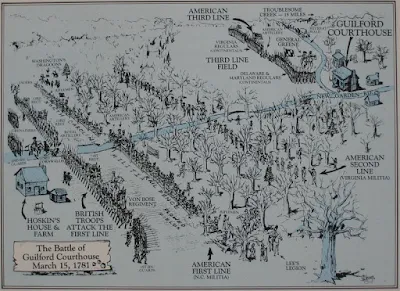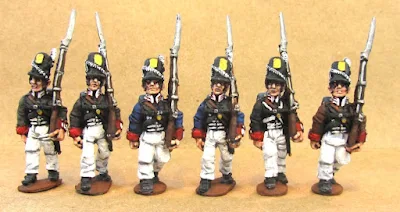The battalions of Canadian militia were active throughout the 1814 campaign. The 2nd Regiment fought at both Chippewa and Lundy's Lane. When I started this project I was confused over the terms "embodied" and "sedentary" militia. These troops who served for longer tours of duty were termed "embodied" militia while those who were called away from their farms and businesses only during times of dire emergency were the "sedentary" militia.
The Sedentary militia units seldom had uniforms. They might have castffs from stores but fir tge most part hey were instructed to report for battle turned out in a civilian coat made of a dark cloth. They were advised to avoid grey coats, which was the color frequently used by the Americans.
The Embodied militia wore both uniforms and civilian clothes. While they wanted to present a uniform appearance, it was very rarley achieved. Depending on the year or month they were given red coats with yellow facings, green coats with red or yellow facings, castoffs from the 41st Foot (red faced red), regulation gray trousers, "gunmouth" blue trousers. Head gear were left over stove pipe shakos, round hats or what ever the individual brought with them. Equipment were regular accoutrements. The troops who came the closest to military uniformity were the flank companies, who's uniforms included lace and possibly wings.
On the table top they present a interesting and unusual appearance.





.jpeg)
.jpeg)





.jpeg)





